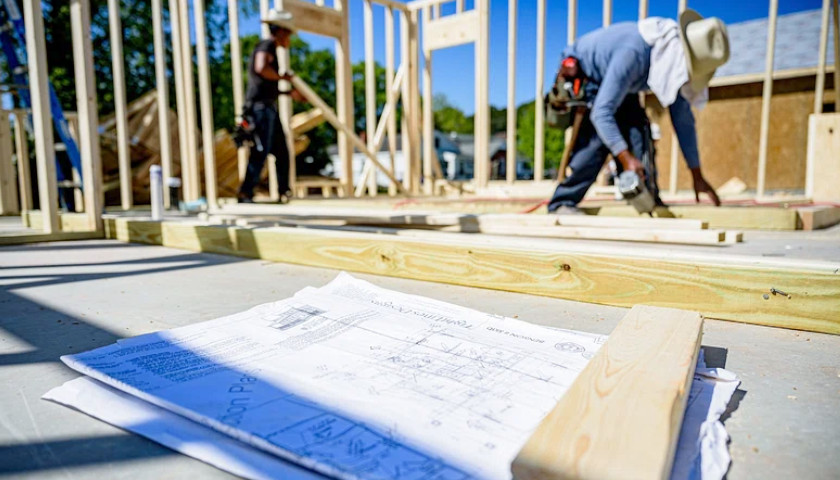by Bethany Blankley
Minnesota ranks among the top places to live in the country according to the most recent U.S. News & World Report’s annual Best States Rankings.
Some political leaders are attributing Minnesota’s third-place ranking to its high taxes, but critics argue that couldn’t be further from the truth.
The Center of the American Experiment compared U.S. News’ ranking with the Tax Foundation’s state’s business tax climate analysis, which ranked Minnesota eighth-worst.
Minnesota’s state and local tax burden was the 11th-highest in the U.S. in fiscal 2016, according to a report produced Key Policy Data (KPD). And according to the financial watchdog Truth In Accounting, Minnesota’s finances are on a “roller coaster ride,” with every taxpayer owing $4,700 to pay off the state’s debt.
“We see no strong relationship between a state’s tax burden, as measured by the Tax Foundation, and whether it is a better or worse state, according to U.S. News & World Report,” John Phelan, an economist at the Center of the American Experiment, said in a statement.
“Simply put, the causal relationship of ‘high taxes [lead to a] better state,’ just does not exist,” he argues. “Washington and New Hampshire, the two states which rank above Minnesota, rank an average 20th and 6th, respectively, for tax burden compared to Minnesota’s 43rd.”
Two states ranked below Minnesota – Utah and Vermont – have relatively low (8th) and relatively high (41st) tax burdens respectively, Phelan adds.
“The theory that higher taxes make a state better as measured by some ranking is a very easy one to check against data,” he says, which proves otherwise.
According to the 2018 Family Prosperity Index released by the Family Prosperity Institute (FPI), Minnesota has ranked between the sixth and 10th-best place to live over a six-year period of analysis. But the reason for Minnesota’s prosperity, Scott Moody, one of the authors of the study, says, isn’t because of tax policy but because of “the legacy of the strong family-oriented nature” of its residents.
The FPI definition of “prosperity” includes how families are faring, which its authors argue cannot be solely measured by dollars and cents. Parents do not necessarily decide where to live and raise their children by assessing the GDP. Rather, the FPI argues, they “take a more holistic approach,” consider factors like quality of education, level of crime and public safety, and community health among other factors.
Moody warned that one area of concern for Minnesota’s quality of life is the size of its Medicaid system and government burden, which rank 33 and 34 in the index.
“If policymakers aren’t careful, this can smother the private sector, leading, in the long run, to lower incomes and greater family poverty,” he said.
The regional performance of Minnesota and neighboring states fare well in the Index, and “has more to do with common cultural traits than state economic policy,” Phelan said. The causation between strong families and a strong economy “reflects that Minnesotans, in general, live ‘conservative’ lives in terms of their familial arrangements,” he added.
For two years, the Social Capital Project within the Joint Economic Committee (JEC), chaired by Sen. Mike Lee, R-Utah, “has documented trends in associational life – what we do together – and its distribution across the country.”
The project has established evidentiary-based benchmarks and is now developing a national policy agenda rooted in social capital, which focuses on expanding opportunities to “strengthen families, communities, and civil society.”
Research by the Social Capital Project has found that states score better on its social capital index when family unity is higher, in addition to higher levels of family interaction, social support, community participation, and charitable giving.
“The extent to which government policy can expand opportunity or reverse America’s deteriorating family and community life is, first and foremost, limited by our commitment to classical liberal principles of personal responsibility, individual choice, and freedom from state encroachment on private decision-making,” Lee argues.
Social welfare policies that are continuously funded by increased tax-and-spend policies, such as those designed to provide greater income security, for example, he says, “often nevertheless create perverse incentives for beneficiaries to act in ways that impede opportunity. Many safety-net programs include features that discourage work, marriage, and saving. Policies to mitigate risks often counterproductively generate more risk-taking – the phenomenon known as ‘moral hazard.’”
– – –
Bethany Blankley is a contributor for CenterSquare.com.
Photo “Minnesota Neighborhood” by Tony Webster. CC BY-SA 2.0.





